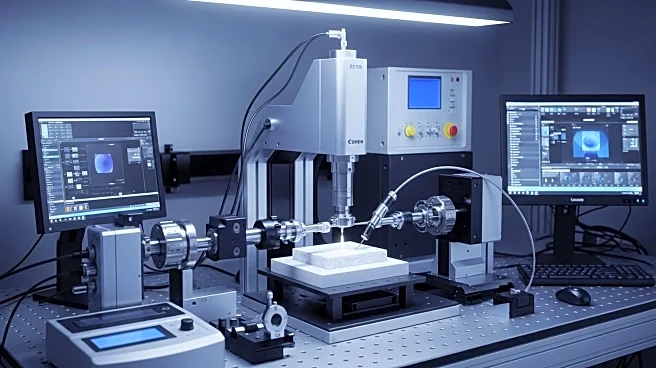What is the story about?
What's Happening?
A Nature article explores the manipulation of terahertz phonon-polaritons in the ultrastrong coupling regime using bound states in the continuum (BIC). The study involves a hybrid system composed of Au metasurfaces and MAPbI3 films, where asymmetric C-shaped Au SRR pairs generate BIC modes. The research highlights the tuning of BIC resonance peaks and the coupling between BICs and phonons, resulting in phonon-polariton modes. The article discusses the impact of geometric scaling on coupling strength and the role of mode volume in enhancing Rabi splitting. The study provides insights into the formation of phonon-polariton modes and their potential applications in photonic devices.
Why It's Important?
The ability to manipulate phonon-polaritons in the ultrastrong coupling regime has significant implications for the development of advanced photonic devices. By enhancing light-matter interactions and modifying dispersion characteristics, researchers can create innovative applications in fields like topological engineering and ultrafast modulation. The study's findings on coupling strength and mode volume offer valuable insights for designing efficient terahertz devices, which could lead to breakthroughs in communication technologies and electronic transport.
What's Next?
Future research may focus on optimizing the design of hybrid metasurfaces to further enhance phonon-polariton coupling. This could involve exploring new materials and configurations to achieve higher Rabi splitting and improved device performance. Researchers may also investigate the potential of these systems in practical applications, such as terahertz imaging and sensing. The study's insights into wavelet analysis and time evolution of electric modes could lead to advancements in signal processing and data analysis techniques.
Beyond the Headlines
The article raises questions about the long-term impact of manipulating phonon-polaritons on energy efficiency and environmental sustainability. As these technologies advance, considerations around the ethical use of terahertz devices in surveillance and privacy protection will become increasingly important. The study's focus on strong coupling systems also highlights the potential for interdisciplinary research, bridging fields like physics, materials science, and engineering.
AI Generated Content
Do you find this article useful?













